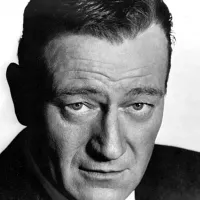Public opinion and media debates around John Wayne Gacy—discover key moments of controversy.
John Wayne Gacy was an American serial killer, known as the "Killer Clown," who murdered at least 33 young men and boys in the Chicago area. He committed heinous acts of rape and torture before killing his victims, many of whom were buried in the crawl space of his home. Gacy's public persona as a clown contrasted sharply with his horrific crimes, adding to the notoriety of the case. His trial and conviction were highly publicized, making him one of the most infamous serial killers in American history.
January 3, 1972: First Known Murder: Timothy Jack McCoy
On January 3, 1972, Gacy committed his first known murder. He lured 16-year-old Timothy Jack McCoy, known as the "Greyhound Bus Boy", from Chicago's Greyhound Bus Terminal, offering him a sightseeing tour and a place to stay before his bus to Omaha.
January 1974: Second Murder: Unidentified Victim
Around January 1974, Gacy committed his second murder. The victim remains unidentified. Gacy strangled him and placed him in his closet before burial. Bodily fluids leaked from the victim's mouth and nose, staining his carpet.
May 1975: Gacy Assaults Anthony Antonucci
In May 1975, Gacy hired 15-year-old Anthony Antonucci. Two months later, Gacy went to Antonucci's home, and the two drank wine and watched a stag film before Gacy wrestled Antonucci to the floor and cuffed his hands behind his back. Antonucci freed himself, grappled with Gacy, and cuffed Gacy's hands behind his back. Gacy threatened Antonucci but eventually calmed down and promised to leave if freed, which Antonucci did. Antonucci continued working for PDM for nine months.
July 31, 1975: Disappearance of John Butkovich
On July 31, 1975, John Butkovich, an 18-year-old PDM employee, disappeared. His car was later found abandoned with his jacket and wallet inside and the keys in the ignition.
1975: Increased "Cruising" for Sex with Young Males
In 1975, Gacy freely admitted that he began to increase the frequency of his excursions for sex with young males, often referring to these as "cruising".
April 6, 1976: Abduction and Murder of Darrell Samson
One month after his divorce was finalized, on April 6, 1976, Gacy abducted and murdered 18-year-old Darrell Samson, who was last seen alive in Chicago. Gacy buried him under the dining room.
August 6, 1976: Murders Between June 13 and August 6, 1976
William Carroll seems to have been the first of four victims known to have been murdered between June 13 and August 6, 1976. Three were between 16 and 17 years old, and one unidentified victim appears to have been an adult.
October 1976: Gacy Abducts and Kills Kenneth Parker and Michael Marino
In October 1976, Gacy abducted and killed teenage friends Kenneth Parker and Michael Marino. They were last seen on Clark Street in Chicago.
December 1976: Murder of Francis Alexander
Between November and December 1976, Gacy murdered 21-year-old Francis Alexander. Alexander was buried beneath the room Gacy used as his office.
December 1976: Disappearance of Gregory Godzik
In December 1976, 17-year-old Gregory Godzik disappeared. His parents and older sister contacted Gacy about Godzik's disappearance. Gacy claimed that Godzik had expressed a wish to run away from home.
1976: Cram's Testimony of Gacy's Attempted Rape
In 1976, Cram told investigators about Gacy's attempts to rape him. He also mentioned that after the December 13 search, Gacy became pale upon seeing mud on the carpet and checked the crawl space for digging evidence. Cram admitted to spreading lime and digging trenches for drainage pipes, which he described as grave-sized.
1976: Neighbors Notice Behavioral Changes
In 1976, after his divorce, several neighbors noticed behavioral changes in Gacy, including seeing him with young males and hearing his car arriving or departing in the early morning. One neighbor recollected hearing muffled screaming, shouting, and crying emanating from his house on West Summerdale Avenue.
January 20, 1977: Murder of John Szyc
On January 20, 1977, Gacy lured 19-year-old John Szyc to his house to buy his Plymouth Satellite. He later confessed to strangling Szyc in his spare bedroom.
December 1977: Donald Voorhees Testifies to Assault by Gacy
In December 1977, Donald Voorhees testified about his ordeal and assault at Gacy's hands, becoming visibly distressed while recounting the abuse.
1977: Six More Murders by the End of 1977
By the end of 1977, Gacy had murdered six more young men between the ages of 16 and 21.
1977: Gacy Murders One Additional Unidentified Youth
In the spring or early summer of 1977, Gacy murdered one additional unidentified youth and buried him in the crawl space.
January 6, 1978: Police Question Gacy About Assault Allegations
On January 6, 1978, police questioned Gacy about an assault reported by Donnelly. Gacy admitted to having a "slave-sex" relationship with Donnelly but insisted it was consensual. Police believed him and filed no charges.
March 1978: Jeffrey Rignall Assaulted and Tortured
In March 1978, Jeffrey Rignall was assaulted and tortured by Gacy.
March 1978: Gacy Assaults and Releases Jeffrey Rignall
In March 1978, after Gacy assaulted and then released Jeffrey Rignall, he began to throw his murder victims into the Des Plaines River.
December 13, 1978: Validity of the First Search Warrant
After his incarceration, John Wayne Gacy challenged the validity of the first search warrant granted to the Des Plaines police on December 13, 1978, as part of his appeals.
1978: Gacy Supervises Polish Constitution Day Parade for the Last Time
In 1978, Gacy supervised Chicago's annual Polish Constitution Day Parade for the last time, having served as its director since 1975. His association with the event and photograph with Rosalynn Carter later caused embarrassment to the United States Secret Service.
1978: Disposal of Bodies in Des Plaines River
In 1978, John Wayne Gacy, finding no more room in his crawl space, confessed to disposing of five bodies off the I-55 bridge into the Des Plaines River, but only four were ever found. He had considered using the attic, but was concerned about "leakage".
1978: Gacy Committing Murders Alone
John Gacy committed most of his murders between 1976 and 1978, as he largely lived alone following his divorce.
January 1979: Gacy Confesses to Murders and Plans to Conceal Bodies
In January 1979, after police found human remains in his crawl space on December 22 and informed him of murder charges, John Wayne Gacy confessed to murdering approximately thirty young males. He claimed they willingly entered his house, and he mostly buried them in his crawl space. He also admitted to planning to cover the crawl space with concrete to further conceal the bodies.
February 6, 1980: Gacy's Murder Trial Begins
On February 6, 1980, John Wayne Gacy's trial began in Cook County, Illinois, with Judge Louis Garippo presiding. He was charged with 33 murders, and the jury was selected from Rockford due to extensive press coverage in Cook County.
June 2, 1980: Gacy Sentenced to Death
On June 2, 1980, after deliberating for over two hours, the jury sentenced John Wayne Gacy to death for each murder committed after the Illinois statute on capital punishment came into effect in June 1977. His execution was set for that same day.
1980: Gacy's Trial in Cook County
In 1980, John Wayne Gacy faced trial in Cook County for multiple murders. His then-defense lawyer, Richard Kling, later argued that Gacy had ineffective legal counsel during this trial.
February 15, 1983: Gacy Stabbed by Fellow Inmate
On February 15, 1983, Henry Brisbon, a fellow death row inmate known as the I-57 killer, stabbed John Wayne Gacy in the arm with a sharpened wire, resulting in treatment at the prison hospital.
1984: Illinois Supreme Court Upholds Gacy's Conviction
In mid-1984, the Supreme Court of Illinois upheld John Wayne Gacy's conviction and ordered his execution by lethal injection, initially set for November 14.
March 4, 1985: U.S. Supreme Court Denies Gacy's Appeal
On March 4, 1985, the Supreme Court of the United States denied John Wayne Gacy's appeal against the Illinois Supreme Court's decision.
1985: Gacy Appeals Execution Decision
In 1985, John Wayne Gacy appealed the decision that he be executed, leading to further legal proceedings.
September 11, 1986: Gacy's Post-Conviction Petition Dismissed
On September 11, 1986, John Wayne Gacy's post-conviction petition, seeking a new trial, was dismissed after his lawyer argued he had ineffective legal counsel at his 1980 trial.
September 29, 1988: Illinois Supreme Court Upholds Gacy's Conviction Again
On September 29, 1988, the Illinois Supreme Court upheld John Wayne Gacy's conviction, setting a new execution date of January 11, 1989.
January 11, 1989: New Execution Date Set for Gacy
On January 11, 1989, a new execution date was set for John Wayne Gacy after the Illinois Supreme Court upheld his conviction on September 29, 1988.
October 1993: U.S. Supreme Court Denies Gacy's Final Appeal
In October 1993, the U.S. Supreme Court denied John Wayne Gacy's final appeal, which led to the Illinois Supreme Court formally setting an execution date for May 10, 1994.
2012: Lawyers claim Gacy was out of state during murders
In 2012, two Chicago lawyers said travel records show that Gacy had been in another state at the time of three of the murders, implying he had one or more accomplices.
Mentioned in this timeline
The United States of America is a federal republic located...

Radar is a radiodetermination system using radio waves to detect...

An Amber Alert also known as a Child Abduction Emergency...

John Wayne born Marion Robert Morrison and nicknamed Duke was...

A shoe is a protective and comfort-providing item of footwear...

Las Vegas Nevada's most populous city and the seat of...
Trending

8 months ago Amad Diallo voices frustrations, praises medical team, eyes Europa League after injury.

5 months ago Sebastian Stan to star in 'Frankenstein in Romania' film written by Radu Jude.
Vance Joseph is an American football coach and former player currently serving as the defensive coordinator for the Denver Broncos...

2 months ago Lake Tahoe: Service Roads Closure, Heavenly Village Ice Rink Opens with Bear!

Kliff Kingsbury is an American football coach currently serving as the offensive coordinator for the Washington Commanders in the NFL...
The Topps Company is an American manufacturer of trading cards and collectibles most notably known for its baseball and other...
Popular

Stranger Things created by the Duffer Brothers is a popular...

XXXTentacion born Jahseh Dwayne Ricardo Onfroy was a controversial yet...

Kelsey Grammer is an accomplished American actor producer and singer...

Candace Owens is an American conservative political commentator and author...

Bernie Sanders is a prominent American politician currently serving as...

Melania Trump a Slovenian-American former model has served as First...